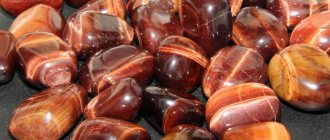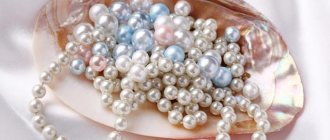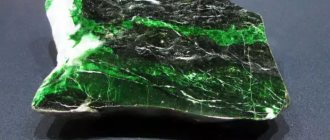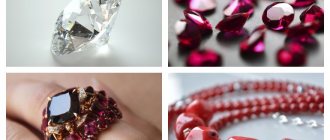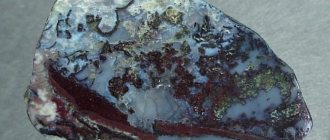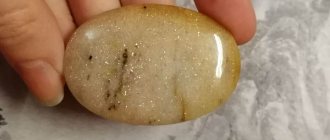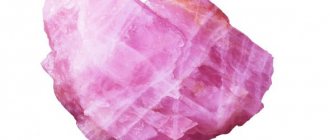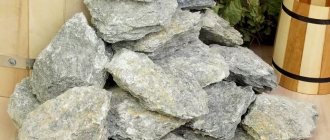Origin of the stone
The history of peridot is comparable in age to the history of Ancient Egypt and the Mesopotamian kingdoms - it is also about 6,000 years old. The first of the deposits found (by the way, is still being developed) is located on the island of Zeberget in the Red Sea, which now belongs to Egypt.
Chrysolite
This stone was valued by the pharaohs of the “country of Kemet” and the high priests of ancient Judea. The golden-green gem was brought home from Palestine by European knights returning from the Crusades. The stone personified the playful and hot Middle Eastern sun, but at dusk, in the flickering light of tallow candles and splinters, the golden shine gave way to rich green, for which peridot received the name “evening emerald.”
The popularity of peridot periodically decreased and sometimes increased, but it never completely left the jewelry arena. Suffice it to say that a specially cut olive chrysolite adorns the Great Imperial Crown of the Russian autocrats. It weighs 192.75 carats and is incredibly expensive.
Peridot is one of the few semi-precious minerals that can be combined with gold and even diamonds, although only the best specimens are given this honor.
The origin of the “evening emerald” is either magmatic, like a diamond, or cosmic - it was found in meteorites that fell to Earth. Peridot was also discovered in soil samples taken on the Moon.
Place of Birth
Origin
peridot first discovered in Egypt in Alexandria, as well as on the island of Zebargad in the Red Sea. Today, these ancient deposits are considered completely depleted.
Large deposits
— Advertising —
Large deposits of gem-quality peridot have been found in Arizona, Iceland, Norway, Germany, Italy, Congo, Australia, and the Hawaiian Islands. The largest specimens are found in Burma, in Mogok. The supplier of high-quality peridot today is Pakistan.
More recently, peridot was found in meteorites.
Physicochemical characteristics
It is not entirely correct to talk about the physical properties of the chrysolite stone, since this word has historically been used to designate a whole group of greenish or yellow crystals, which includes topaz, chrysoberyl and even green Ural garnet. From a geological point of view, a true chrysolite is considered to be a colored variety of the mineral olivine. In scientific usage in English-speaking countries, it is also called peridot.
Chrysolite
Olivine, including green, yellow and olive, has a Mohs hardness of 6.5–7, acquires a glassy luster after polishing, and has a high refractive index of light rays - which is why diamond cuts are often used in relation to it. Despite this, olivine is fragile and subject to internal stress, so it breaks easily.
From a chemical point of view, it is magnesium and iron orthosilicate. Sometimes it contains small amounts of impurities of other substances - for example, mica. Its shine and transparency are glassy-oily.
| Formula | (Mg,Fe)2SiO4 |
| Color | Golden green in various shades of green |
| Shine | Glass |
| Transparency | Transparent |
| Hardness | 6,5-7 |
| Cleavage | Average in one direction |
| Kink | Uneven, conchoidal |
| Density | 3.2-4.3 g/cm³ |
Mining locations
In addition to the mentioned island of Zeberget (now called St. John's), peridot deposits are scattered throughout the world, but, as a rule, they are small. This mineral is rarely found on its own; it is mainly found together with diamonds in kimberlite pipes and diamond-bearing placers. Meteorite chrysolite is as rare as meteorites.
In Russia, “evening emerald” is mined along with diamonds in the mines of Yakutia, found in the Ural Mountains and in Kovdor, a small mountain range in the north of the Murmansk region. Kovdor gems are especially highly valued, since it is there that the highest quality specimens are found.
Abroad, the main deposits are also most often located side by side with diamond developments: they are in Tanzania and South Africa (South Africa), in Afghanistan and Sri Lanka, in Brazil and the USA. In the States, a large deposit of a particularly valuable variety - Messa chrysolite - is located in the state of Arizona, on the Apache Indian reservation. The development of this field is their “national business.”
The history of peridot
The mineral became known more than six thousand years ago. It was highly valued as it was considered divine. At times, because of its attractive green color, the stone was called devilish. Since then, opinions about its purpose have been divided, some worshiped it and considered it a talisman, while others, on the contrary, feared it as a hellish temptation. But still, peridot was used to decorate the Cologne Cathedral.
The Egyptians went to mine precious stones only at dawn, because due to the bright reflection, it was difficult to find them. The bright sun reflected in them, and the peridots remained unnoticed by human eyes.
Colors and varieties
The mineral chrysolite is a transparent, sometimes translucent (there is a slight haze) greenish-yellow stone. The golden hue is always present in it, the saturation of the green color varies depending on the chemical composition, viewing angle, lighting, etc. This is one of the few stones that “loves” artificial lighting - in its rays it most closely resembles a noble emerald.
Chrysolite
There is no clear color differentiation of subspecies. A particular stone may have a brownish, grassy, olive tint, or may be almost yellow. The most ancient specimens from the island of Zeberget were golden-green, with a hint of gold, which is why they received their name (“peridot” from ancient Greek - “stone of gold”). Now the grass-green and olive subspecies are most valued, as well as stones with light effects - asterism (“star-shaped” chrysolites), iridescence, “cat’s eye” effect, opalescent, and so on.
The cost of peridot greatly depends on its purity, size and weight. Large transparent stones, more than 1 cm in diameter, without cracks, chips or other defects, are rare. They are expensive and rightfully adorn the exhibitions of the world's leading museums. Specimens with minor defects are much more common; they are considered ornamental stones.
There are 2 main grades of quality stones: grade A - pure crystals without defects and without a brown tint in color, and grade B - all others, except those completely unsuitable for use in jewelry.
History of the stone
The crystal is semi-precious. Peridot translates to “bringer of abundance.” Experts confirm that he really has such qualities.
The gem has other names:
- chrysolite;
- olivine
The stone is not rare, so it is not difficult to find. It looks quite aesthetically pleasing and has healing qualities. The mineral was first discovered in Zabargad. This island is located in the Red Sea area. The Arabs still call the gem “zabargad.”
Olivine has such a property that when a ray of light hits it, the first one begins to shine pleasantly with a soft green color. Maybe that’s why it is also called the “evening emerald”. In ancient times, the gem was used to decorate items such as scepters. It could often be seen on royal robes, as well as in temples in India and Europe.
The crystal is much older than historical records indicate. The Bible mentions him. Peridot is one of the stones that was present on the clothing of the Jewish high priest. The first products with gemstones are approximately four thousand years old.
Medicinal properties
The properties of chrysolite in medicine are varied. Lithotherapists identify several areas in which wearing peridot is considered beneficial. This:
- neuralgic pain;
- headaches (except migraines);
- neuroses caused by stress - stuttering syndrome, nightmares and insomnia;
- hormonal fluctuations (stressful nature);
- blurred vision.
In the latter case, in order to slow down or stop developing myopia, lithotherapists advise simply looking at peridot for 20–30 minutes a day.
In addition to all of the above, some lithotherapists claim that olivine, carried with you or applied to a sore spot, relieves pain in cases of problems with the stomach, liver, kidneys and spine. It is also credited with the ability to relieve arrhythmia and normalize blood pressure.
Like some other stones, such as heliotrope, olivine is considered a detoxifier. To do this, some folk healers practice making “chrysolite water” - the stone is dipped into a vessel with water for a day, which then acquires beneficial properties.
Green peridot helps get rid of colds.
Peridot, crushed into powder, is included in some folk ointments for skin diseases - dermatitis of various natures and psoriasis.
Magical Features
In the world of magic, chrysolite is associated with two magical forces: the Sun, to which it is dedicated, and the element of Air. To some extent, this is a combination of Air and Fire, two mutually supporting forces. This is where the amazing combination of the basic magical properties of chrysolite comes from: protection from dark forces combined with attracting good luck.
Faceted peridot
First of all, it is a powerful amulet, capable of acting against creatures of the magical world, as well as protecting against random dangers of the physical plane, especially fires. Sorcerers and alchemists of the Dark Ages used chrysolite in a gold frame as an amulet that protected against evil spirits and evil spirits. In gold, it can even protect against hostile spells, damage, the evil eye and similar influences.
The silver setting gives the stone another ability - to protect against physical dangers. He was credited with the ability to deflect arrows and knives, giving the owner a bit of luck, necessary for both a magician and a warrior. Regardless of the frame, peridot had to be worn only on the left hand.
“Golden Stone” especially loves courts and litigation. It has long been considered the “stone of attorneys” - lawyers and notaries. Olivine was believed to help win even the most complex lawsuits. It also attracts good luck for bankers and moneylenders.
Chrysolite is luck in its material form.
Chrysolite
Among other things, this gem actively influences a person’s charisma in the direction of strengthening it. It helps the wearer to be liked by other people more, develops empathy (the ability to empathize), which allows you to successfully make new and restore lost connections. It is effective in any area where the result of any business depends on a person’s personal charm. The “Sun Stone” makes its owner “glow” like a star, which attracts other people to it.
For example, it can be successfully used to mutually pacify quarreling spouses - it will teach them to better understand each other.
Olivine also develops insight, intuition and, to some extent, precognitive abilities, if present initially.
It increases self-esteem - sometimes to the point of developing self-confidence.
Due to these properties, chrysolite is not recommended for wearing by people who initially have high self-esteem, who are inclined to influence the fate of others and try to decide other people's affairs at their own discretion. He is able to turn such people into tyrants and tyrants, who, in principle, are unable to listen to other people's opinions.
Peridot is also suitable for people who are planning to radically change their life. He helps them in their endeavors.
Interestingly, olivine is monogamous. It serves only one owner, the first and last. You cannot re-gift and sell (or buy second-hand - not in a store, but from the previous owner) jewelry with chrysolite - soon after this the stone may become cloudy, crack, or even get lost. In any case, he will lose his magical power.
Magic properties
The magical stone chrysolite was known among ordinary people and nobles. The popularity of the enchanting mineral knew no bounds. Even clergy used the vibrations of the stone to drive out dark forces. Jewelry with a gem could attract the attention of fans, evoke a feeling of sympathy and sexual attraction.
Often the artifact was used to change fate, solve a difficult life problem, or unravel the most mysterious crimes. Law enforcement officers, lawyers and judges used the talisman to help with cases. In the Middle Ages, the artifact was popular among the merchant fraternity, as it helped to manage money wisely and avoid theft and loss of property.
The magical spells of the stone are aimed at improving life in the following areas:
- Love is something without which a person cannot live a happy life. Choosing a worthy partner, a companion for life, is the dream of most representatives of the fair sex. The magic of the stone pushes people into each other's arms.
- Friendship can be short-term, but in order to prolong such a relationship for many years, you need to get rid of envy. The gem helps to overcome envy of a friend.
- Career: to achieve high results in professional activity, maximum effort is required and what is very important is confidence in one’s own abilities. Peridot will make you believe in yourself and learn to use your innate qualities.
- Society: often the environment makes excessive demands, sometimes you have to resort to judicial assistance. Peridot promotes favorable resolution of litigation.
- Mental health affects quality of life. Anxieties, fears, phobias, mania, depression poison existence. Chrysolite gives its owner optimism, which helps get rid of nervous and mental disorders.
The energy of the stone affects most areas of life, helping a person understand the world in a new way. Peridot vibrations perform the following functions:
- relieve apathy, depression, give a feeling of joy and freedom;
- help improve the thinking process, make the mind “sharper”;
- protect against the influence of dark forces, help “eliminate” the enemy;
- relieves from obsession that can cloud the head, force a person to carry out someone else’s will against the person’s desire;
- protects property from fires and people from accidents;
- promotes the development of foresight and insight in a person;
- if you put the amulet under the pillow, it will protect the owner from troubled sleep.
Also read: Rhodolite - a gemstone for newlyweds
The amulet will make you wake up from a lucid dream, help you consider the colors of a new life, learn to feel yourself without fear and enjoy the delights of existence.
Zodiac compatibility
Astrology is clear about this stone: most of all, according to the horoscope, it corresponds to Virgo, Pisces and Taurus, and to a lesser extent (oddly enough) to the fire signs - Leo and Aries. The worst combination of peridot jewelry is with the characters of Scorpio, Aquarius and Cancer. The meaning of the peridot stone for each of these signs is individual.
| Zodiac sign | Compatibility |
| Aries | + |
| Taurus | + |
| Twins | + |
| Cancer | + |
| a lion | +++ |
| Virgo | +++ |
| Scales | + |
| Scorpion | + |
| Sagittarius | + |
| Capricorn | + |
| Aquarius | + |
| Fish | — |
(“+++” – fits perfectly, “+” – can be worn, “-” – is strictly contraindicated)
Compatibility with other minerals
As an Air stone, olivine combines worst with stones of the Earth and Water elements, preferring proximity to gems dedicated to Air or Fire. This means that it can be worn:
- with diamond;
- coral;
- ruby;
- sapphire;
- rock crystal;
- amethyst;
- chrysoprase;
- carnelian;
- tourmaline;
- topaz.
Chrysolite
Mutual hostility and work “in opposition” to the “golden stone” is observed if it is worn at the same time:
- with sardonyx;
- obsidian;
- onyx;
- jasper;
- lapis lazuli;
- heliotrope;
- malachite;
- agate
Note that all of the above are opaque stones. They are considered to belong to the elements of Earth.
In addition, the playful and windy “sun stone” does not like Water; in combination with Water stones, it can cause a storm. Therefore, it should be worn with some caution:
- with emerald;
- moonstone;
- opal;
- aquamarine;
- pearls;
- alexandrite.
This does not mean that peridot cannot be used with the above-mentioned precious and semi-precious stones. It is not recommended to wear it for a long time or combine any of these stones with olivine in one product: the magical properties of the stone will weaken.
Compatibility with names and zodiac signs
The astrological properties of peridot, according to experts who study the influence of stars on people’s destinies, are suitable for absolutely all representatives of the zodiac circle. Everyone who is able to take responsibility for fate into their own hands has the right to decide who may be suitable for a precious amulet. If an astrological forecast is of significance to a person, helpful suggestions are provided below.
- Pisces, with the help of peridot vibrations, will feel support in making important decisions without hesitation, as well as help in eliminating conflict situations in the family and at work.
- Leos, through the power of the amulet, will be able to quickly receive well-deserved recognition; the magic of the stone will help remove obstacles that arise in achieving the goal.
- For Virgos, olive stone helps to strengthen self-esteem and will also help lower the bar in demands on yourself and others.
- Libra, having a talisman with them, avoids betrayal from people. Chrysolite will save them from creative tossing and will tell them in which direction to move.
- In Taurus, stubbornness by nature, excessive quality makes them suffer. Peridot helps to tame characteristic negative traits.
- Geminis sometimes rush into making decisions, and as a result they are often disappointed. Using a gem for the purpose of an amulet will help avoid short-sightedness and mistakes.
- Aries is a zodiac sign that is distinguished from others by its excessive straightforwardness; peridot helps to balance character.
- The compatibility of the mineral with the remaining signs, Aquarius, Cancer and Scorpio, does not guarantee a high result, but it will serve as an excellent decoration.
The assigned name has a special influence on fate. It happens that these influences prevent a person from opening up and feeling the fullness of life. Any energy without control turns into a “mad” flow, which is redirected correctly with the help of the energy of the crystal.
- Marina is mysterious, enigmatic, and simply secretive, which prevents her from finding contact among people. Chrysolite jewelry will help overcome isolation.
- Antonina is sincere and open, unfailing in helping, which often causes her a lot of trouble. Peridot protects against excessive intrusiveness of people who exploit without a twinge of conscience.
- Margarita is tender and dreamy, often “burned” in her personal life. The gem will attract a kind, romantic companion into her life.
- Evgeniy is an irrepressible dreamer with enormous potential. The talisman will help you choose a profession, with the help of which you will achieve material well-being and realize your life plans.
- Rostislav considers himself a fighter for justice, which sometimes threatens with unforeseen consequences. The magical power of chrysolite will serve as excellent protection and help avoid unpleasant situations.
- Innocent suffers from excessive restraint and isolation. The artifact helps to free the “beast” within oneself and allows one’s abilities to break out.
Chrysolite has been famous since ancient times for its ability to point out shortcomings in the owner’s character and help to cope with them.
Scope of application
Colored olivine (peridot) is actively used in jewelry. Gold and silver jewelry is made with it: earrings, pendants, bracelets, pendants, brooches and rings.
Silver ring with chrysolite
They are also used without a frame, for example, to make beads and necklaces. Large stones with some effect, for example with a “cat’s eye” or iridescence, are used for inlaying luxury items - goblets, tiaras, figurines and other things. Large stones that have no jewelry value serve as raw materials for stone cutters. For example, they are often used to make small animal figurines.
The standard cutting methods for this semi-precious stone are diamond (57 facets), step, and emerald. For specimens with the cat's eye effect, a cabochon cut is used. The raw crystal also looks quite beautiful.
How to distinguish a fake?
Despite the fact that artificial chrysolite is an impossible thing (laboratories that synthesize it do not exist in nature), there are many fakes made of plastic or colored glass on the market. You need to be especially wary of specimens that come from the island of Ceylon (state of Sri Lanka): part of the local population has begun to “produce” fake green stones, including chrysolites, from broken bottles. Shards of green bottle glass are immersed in the sea in the surf zone. After a few years, the waves roll them to such a state that the glass becomes like polished but uncut chrysolites.
Ring with peridot
Glass or plastic imitation is easily determined:
- firstly, it does not have the effect of dividing the sun's rays passed through it, as well as any other lighting effects;
- secondly, it quickly heats up from the warmth of your hands;
- thirdly, a fake “stone,” especially a plastic one, can be easily scratched.
You should be suspicious of large peridots, especially those sold at low prices. The price of a natural “sunstone” with a diameter of more than a centimeter cannot be less than $200, and not per stone, but only per carat (unit of mass). Large colored peridots are very rare in nature.
Another stone of a similar color and shade, only cheaper, for example, chrysoberyl, can also be passed off as chrysolite. But, unfortunately, this can only be determined by laboratory methods.
History and Application
In ancient times, peridot was often called the “evening emerald.” It received this name due to its optical properties, noticed by the ancient Romans. As soon as darkness fell, at dusk or by candlelight, the gem lost its greenish-yellow hue and became richly emerald.
The first mention of peridot dates back to more than 4000 BC. e. The ancient Roman polymath writer, Pliny the Elder, used the name “peridot” for all golden-colored stones, without being able to distinguish them in any way other than the characteristics of color and hardness.
The Jewish historian and military leader, Josephus, in his book talks about this mineral in the fourth row adorning the robe of the high priest. And in the “Apocalypse” the evening emerald adorns the seventh foundation of the Heavenly Jerusalem. By the way, historians claim that it was through this stone that the Roman Emperor Nero watched the fire of Rome.
Europe has known about peridot for quite a long time; the gem was actively imported by the crusaders. But it became especially popular only during the 19th century, along with rumors that the mineral relieves men of impotence and returns love passion.
The icon of Andrei Rublev “Trinity” is also decorated with chrysolites. The largest green crystals are kept in Washington, at the Smithsonian Research Institution, and in London, at the Geological Museum - 310 and 146 carats, respectively.
How to wear and care
To fully reveal its magical properties, rings and bracelets with chrysolite are best worn on the left hand. Unlike other stones, there are no restrictions on wearing time. But there are requirements for the owner to be careful: this is a relatively fragile mineral that can be easily damaged.
You cannot store it in a box with stones of increased hardness, especially beryl and diamonds, as well as metal objects.
Brooch with chrysolite
You can wash jewelry with chrysolite with a weak solution of ammonia in water or wipe it with baking soda using a soft sponge. Before washing, you need to make sure that the stone in the jewelry is not secured with glue.
Peridot in astrology
It is known that each person needs to wear his own stone, i.e. a stone associated with his birth sign. Chrysolite is the stone of the sun in astrology. It is suitable for the zodiac sign - Pisces.
A Pisces woman who wears peridot earrings will always maintain happiness in her family relationships. And for a man (the same sign), peridot will help him move up the career ladder. Mutual love and respect will be preserved by wearing rings with a stone, for both men and women. In astrology, it is believed that a zodiac sign such as Leo should also wear peridot jewelry, and this also applies to Virgo.
Astrologers say that each stone has its greatest power at a certain period of time. According to the calendar of stones according to M. Reinsky, chrysolite is much more effective in the month of October . Depending on the astrological phase in which the planet and zodiac sign are located, the influence of the stone on a person’s life and health is determined.
Modern astrology claims that this stone will become a good talisman for the sign - Leo, Sagittarius; is a lucky stone for the zodiac sign – Libra. Those people who were born on the 3rd, 12th, 21st, 30th of any month can also wear peridot.
